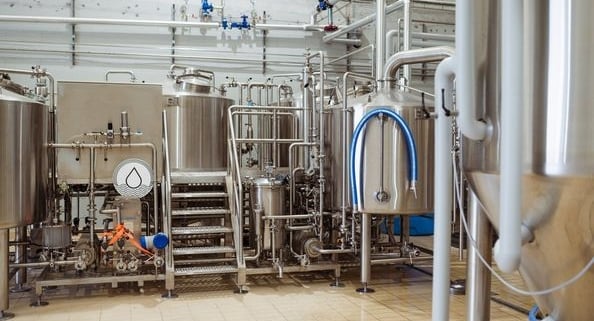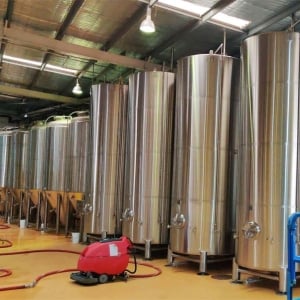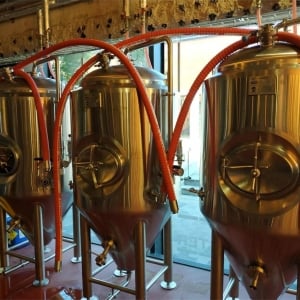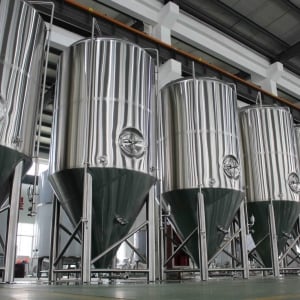Beer Machines for Sale
Ever dream of enjoying restaurant-quality draft beer at home without leaving the couch? Look no further than beer machines, also known as kegerators or home draught systems. These remarkable appliances dispense chilled beer from kegs, keeping it fresh and flavorful for weeks on end.
This comprehensive guide dives into the world of beer machines for sale, exploring their functionalities, types, and the brewing process itself. We’ll equip you with the knowledge to choose the ideal beer machine for your home bar or entertainment room, transforming you into a homebrew hero.
Demystifying Beer Machines: An Overview
Beer machines, in essence, are personal refrigerators specifically designed for kegs. A keg is a sealed metal container, typically containing 5 or 10 gallons of beer, that keeps the beverage pressurized with CO2. This pressure allows for consistent, controlled pouring, similar to what you experience at a bar. The beer machine chills the keg to the optimal serving temperature, ensuring a crisp, refreshing pint every time.
There are two primary types of beer machines:
- Kegerators: These are freestanding units that resemble a mini-fridge. They offer the most flexibility in terms of size and style, allowing you to choose a model that complements your existing décor.
- Keg Dispensers: These are compact countertop appliances designed for limited spaces. While they lack the storage capacity of kegerators, they offer a space-saving solution for enjoying draft beer at home.

Beer Machine Components
Understanding the core components of a beer machine empowers you to make informed decisions when selecting a model:
- Cooling System: This ensures your beer reaches and maintains the optimal serving temperature, typically between 32-40 degrees Fahrenheit.
- CO2 Tank: Carbon dioxide pressurizes the keg, forcing the beer out and creating the signature draft pour.
- Pressure Regulator: This regulates the CO2 pressure, ensuring a proper pour that dispenses the right amount of foam.
- Tap Tower: This houses the beer tap(s) and displays the keg brand or type of beer.
- Drip Tray: This catches any spills or condensation, maintaining a clean and sanitary environment.
Beer Machine Types
Here’s a breakdown of the different beer machine types to consider, along with their key characteristics:
| Beer Machine Type | Pros | Cons | Ideal For |
|---|---|---|---|
| Kegerators (Freestanding) | Offers the most capacity and style options | Larger footprint | Homeowners with dedicated space for a beer dispenser |
| Keg Dispensers (Countertop) | Space-saving and portable | Lower keg and CO2 tank capacity | Apartment dwellers or those with limited space |
| Single Tap vs. Dual Tap Kegerators | Dispenses one keg at a time | Allows for serving two different beers simultaneously | Home brewers or those who enjoy variety |
Brewing Up Knowledge: The Homebrewing Process
While beer machines themselves don’t involve brewing beer, understanding the brewing process can enhance your appreciation for the perfect pint:
- Malting: Grains such as barley are steeped and germinated, converting starches into sugars.
- Mashing: The malted grains are mashed in hot water, extracting the sugars.
- Lautering: The sweet liquid (wort) is separated from the spent grain husks.
- Boiling: The wort is boiled with hops, adding bitterness, flavor, and aroma.
- Fermentation: Yeast is added to the wort, converting the sugars into alcohol and CO2.
- Conditioning: The beer is allowed to mature and carbonate.
- Kegging: The finished beer is transferred to a sanitized keg, pressurized with CO2 for dispensing.
Understanding these steps allows you to appreciate the craftsmanship behind your favorite beers and the convenience that beer machines offer.
Capacity, Space, Design, and Customization
When choosing a beer machine, consider these factors to ensure it meets your needs:
| Factor | Details to Consider |
|---|---|
| Capacity | How many kegs do you plan to store? Will you be entertaining frequently? |
| Space | Measure your available space to ensure the machine fits comfortably. |
| Design | Choose a style that complements your décor (stainless steel, black, wood accents). |
| Customization | Some kegerators allow for adding additional taps or customizing the tap handle. |
Unveiling the Bottom Line: Beer Machine Price Range
Here’s a general breakdown of beer machine price ranges to help you budget accordingly:
| Beer Machine Type | Price Range (USD) |
|---|---|
| Kegerators (Freestanding) | $200 – $2,000+ |
| Keg Dispensers (Countertop) | $100 – $500 |
Kegerators:
- Budget-friendly (Under $500): These entry-level models offer basic features like a single tap, limited capacity, and a simple design. They’re a good option for casual beer enthusiasts on a tight budget.
- Mid-range ($500 – $1,000): This category offers increased capacity, dual taps for dispensing two beers, and more stylish designs. They’re ideal for those who entertain regularly or want more flexibility in their beer selection.
- High-end ($1,000+): These top-of-the-line models boast premium features like digital temperature controls, multiple taps, nitrogen infusion for certain beers (think Guinness), and sleek, designer aesthetics. These cater to serious beer aficionados or those who prioritize aesthetics.
Keg Dispensers:
- Budget-friendly (Under $200): These compact and affordable options are perfect for those with limited space. They typically have a single tap and minimal features, but still dispense fresh, draft beer.
- Mid-range ($200 – $500): These countertop units offer slightly larger capacities, potentially dual taps, and may have features like adjustable temperature control. They’re a good compromise for those who want a space-saving solution with some additional functionality.
Additional Costs to Consider:
- Kegs: Kegs typically range from $50 to $100 depending on the brand and type of beer.
- CO2 Tank: Expect to pay around $40 to $80 for a CO2 tank, which can last for multiple keg refills.
- Accessories: Drip trays, cleaning supplies, and additional tap handles are additional costs to consider.
Remember: Price isn’t the only factor. Choose a beer machine that fits your budget, space constraints, and desired features.
Installation, Operation, and Maintenance
Once you’ve chosen your perfect beer machine, here’s a breakdown of installation, operation, and maintenance:
| Task | Details |
|---|---|
| Installation | Most kegerators are plug-and-play. Countertop dispensers may require some minor assembly. Consult the manufacturer’s instructions for specific details. |
| Operation | 1. Keg Installation: Sanitize the keg coupler and keg, then connect the keg to the beer machine. 2. CO2 Tank Connection: Attach the CO2 regulator to the CO2 tank and connect it to the beer machine following the manufacturer’s instructions. 3. Setting Pressure: Adjust the CO2 pressure regulator to the recommended level for the specific beer style. 4. Pouring: Open the tap and enjoy your perfectly chilled draft beer! |
| Maintenance | Regularly clean the tap, drip tray, and coupler to prevent clogs and ensure optimal performance. Replace the CO2 tank when empty and periodically check keg connections for leaks. |
How to Choose a Beer Machine Supplier
Selecting the right supplier for your beer machine is crucial. Here’s a guide to help you make an informed decision:
| Factor | Details |
|---|---|
| Reputation | Research the supplier’s online reviews and customer feedback. |
| Selection | Choose a supplier with a wide variety of beer machines to fit your needs and budget. |
| Service | Ensure the supplier offers after-sales support and warranty options. |
| Price | Compare prices from multiple suppliers to find the best deal. |
| Expertise | Look for a supplier with knowledgeable staff who can answer your questions and guide you through the selection process. |
Comparing Pros and Cons of Beer Machines
Beer machines offer a unique way to enjoy draft beer at home, but there are also some considerations:
| Pros | Cons |
|---|---|
| Fresh, high-quality draft beer | Requires purchasing and storing kegs |
| Consistent temperature control | Can be more expensive than bottled or canned beer |
| Variety of beer styles available | Requires some maintenance and cleaning |
| Impress your guests | Takes up space, especially for kegerators |
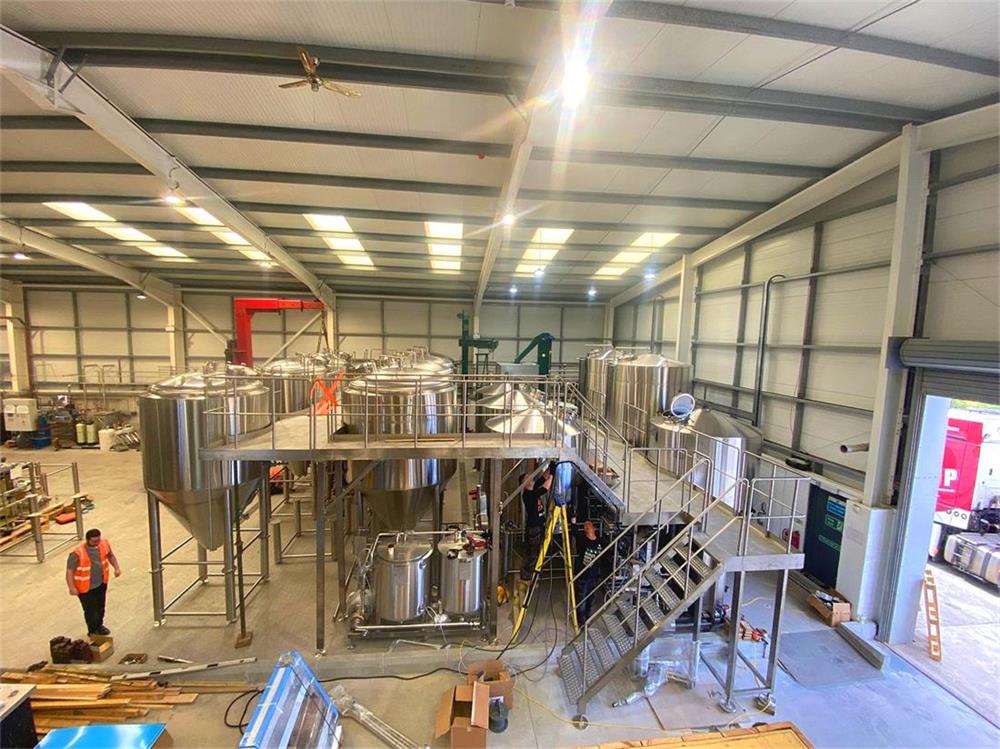
FAQ
Q: What are the benefits of using a beer machine over bottled or canned beer?
A: Beer machines offer several advantages:
- Freshness: Draft beer from a keg stays fresher and delivers a richer, more flavorful experience compared to bottled or canned beer.
- Temperature Control: Beer machines maintain a consistent serving temperature, ensuring your beer is always perfectly chilled.
- Variety: With kegs, you can enjoy a wider selection of craft beers and local brews that may not be readily available in bottles or cans.
- Reduced Waste: Kegs are reusable, minimizing waste compared to disposable bottles and cans.
- Convenience: Draft beer is ready to pour at a moment’s notice, eliminating the need to wait for bottles or cans to chill.
Q: How long does a keg of beer last in a beer machine?
A: A properly pressurized and maintained keg can stay fresh for several weeks or even months in a beer machine. Once a keg is tapped, however, it’s best to consume the beer within 1-2 months for optimal quality.
Q: Where can I buy kegs of beer?
A: Kegs can be purchased from breweries, liquor stores, and homebrew shops. Some bars and restaurants may also offer keg sales to the public.
Q: Do I need to be a homebrewer to use a beer machine?
A: Absolutely not! Beer machines are designed for enjoying commercially brewed draft beer dispensed from kegs. Homebrewing is a separate hobby that involves making your own beer from scratch. However, if you get interested in brewing your own beer, some kegerator models can be used to dispense homebrews.
Q: How do I clean and maintain my beer machine?
A: Regularly cleaning your beer machine is essential for optimal performance and to prevent clogs or contamination. This typically involves cleaning the tap, drip tray, and coupler with warm, soapy water. The manufacturer’s instructions will provide specific details on cleaning and maintenance procedures.
Q: What safety precautions should I take when using a CO2 tank?
CO2 tanks are generally safe when handled properly. Here are some safety tips:
- Store the CO2 tank upright in a cool, dry place.
- Never puncture or tamper with the tank.
- Inspect the tank for leaks or damage before use.
- When connecting the CO2 regulator, ensure all connections are secure to prevent leaks.
By following these tips and consulting the manufacturer’s instructions, you can safely and enjoyably utilize your beer machine for years to come.
Conclusion
Beer machines offer a gateway to the world of draft beer, elevating your home entertainment experience. Whether you’re a casual beer drinker or a craft beer aficionado, a beer machine allows you to savor restaurant-quality pints in the comfort of your own home. With the knowledge you’ve gained from this comprehensive guide, you’re well-equipped to select the perfect beer machine for your needs and budget. So, uncork a world of flavor and unleash your inner homebrew hero, one perfectly chilled draft pour at a time!

